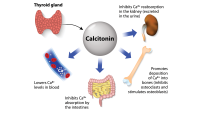Clinical judgment leads to swift action.
Takeaways:
- Myocardial infarctions may present differently in women than men.
- Not all cardiac emergencies present with chest pain.
- A critical assessment of vague symptoms can lead to life-saving treatment.
While Jane*, a 47-year-old woman with no significant medical history, visits her neighbor, Helen, in the hospital, Helen notes that Jane appears pale. Jane says that she hasn’t been feeling well today, but she can’t put her finger on what’s bothering her. “I’m probably just tired, and I’ve been under a lot of stress,” Jane says. As the two continue their conversation, Helen notices that Jane keeps rubbing her jaw. Jane says that her jaw aches.
History and assessment hints
Carl, the nurse caring for Helen, enters the room and notes Jane’s pallor and frequent jaw massaging. He asks Jane if she’s feeling all right and if she has any other symptoms. Jane says she has no other symptoms and no recent dental issues. Carl grows increasingly concerned about Jane’s vague symptomology and, in private, asks Jane about her family history. Jane shares that her father and sister have histories of myocardial infarction (MI) and heart disease. During the conversation, Jane becomes clammy and tachypneic. She rates the jaw pain as 3 out of 10.
Taking action
Carl recognizes Jane’s symptoms as warning signs of an MI and decides to act. He auscultates Jane’s heart and lungs, hearing clear breath sounds and a rapid but regular heartbeat. He calls for the rapid response team and grabs an electrocardiogram (ECG) machine. Jane says, “I don’t know what the fuss is about, I don’t have any chest pain. My jaw just feels achy.” Carl takes Jane to a private room to conduct a 12-lead ECG. The charge nurse notifies the attending physician and the emergency department (ED).
The physician confirms that the ECG shows positive signs of a non-ST-elevation-MI. He orders 2 L of oxygen via nasal cannula and continued telemetry. Jane is transferred by gurney down to the ED to initiate the emergency protocol for heart attacks. In the ED, emergency nurses administer aspirin and draw labs, including a complete blood count, prothrombin time, international normalized ratio, troponin, and D-dimer.
Outcome
The hospital is equipped to perform a percutaneous coronary intervention, so the team quickly preps Jane and takes her for cardiac catheterization with stent placement to treat an incomplete blockage. After 2 days, Jane reports feeling better—her jaw pain has resolved and she no longer feels fatigued. Her heart rate, blood pressure, and oxygen saturation levels have stabilized. Serial troponins continue to trend down, and by the third day have nearly reached baseline.
Education and follow-up
Jane and her husband talk with the cardiologist, who provides education about atypical MI and explains that it’s just as dangerous as any other type of MI. She adds that women frequently have different symptoms than men and may not experience chest pain or shortness of breath.
Discharge education includes how regular exercise, a healthy diet, and stress management can decrease heart disease risk. The discharge nurse emphasizes the importance of adhering to the new medication regimen, including antiplatelets and lipid-lowering medications, to prevent additional cardiac events. Jane learns that she’ll require careful monitoring because women are at higher risk than men for bleeding issues related to these medications. However, their benefits outweigh the risks.
Carl’s astute observations and knowledge of atypical MI ensured that Jane received prompt care.
*Name is fictitious.
Jessica Kirchner is a copywriter for BD.
References:
American Heart Association. Treatment of a heart attack. March 31, 2017.
Centers for Disease Control and Prevention. Women and heart disease. January 31, 2020.
Huber CA, Meyer MR, Steffel J, Blozik E, Reich O, Rosemann T. Post-myocardial infarction (MI) care: Medication adherence for secondary prevention after MI in a large real-world population. Clin Ther. 2019;41(1):107-17. doi:10.1016/j.clinthera.2018.11.012
Mehta LS, Beckie TM, DeVon HA, et al. Acute myocardial infarction in women: A scientific statement from the American Heart Association. Circulation. 2016;133(9):916-47. doi:10.1161/CIR.0000000000000351
Wakefield MK, Williams DR, Le Menestrel S, Falubert, JL. The Future of Nursing 2020-2030: Charting a Path to Achieve Health Equity. Washington, DC: National Academies Press; 2021. doi:10.17226/25982
Key words: myocardial infarction, heart disease, women’s health, heart attack protocol



















1 Comment. Leave new
In March 2022 I sustained an unusual heart attack and almost got sent home from the ED because the MD did not recognize my signs and symptoms when the nurse managing me did. I had very minor chest pain with no radiation of pain to any other places in my body. I rated it as a 3 on a scale on 1 to 10. My troponin rose to 39mg stopping the MD from discharging me and leading to a cardiac catheterization with stent placement.